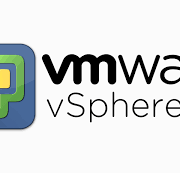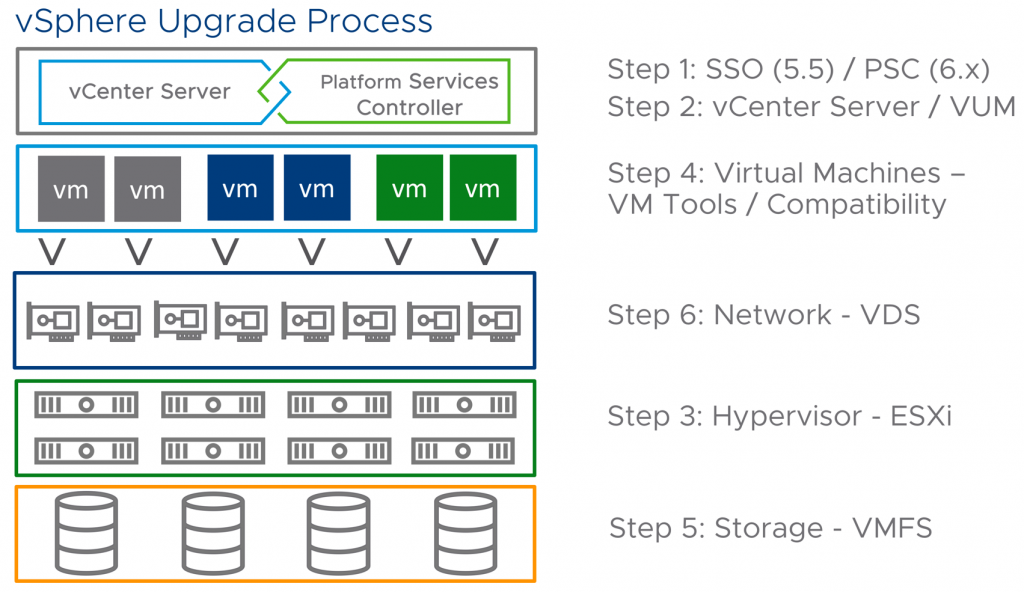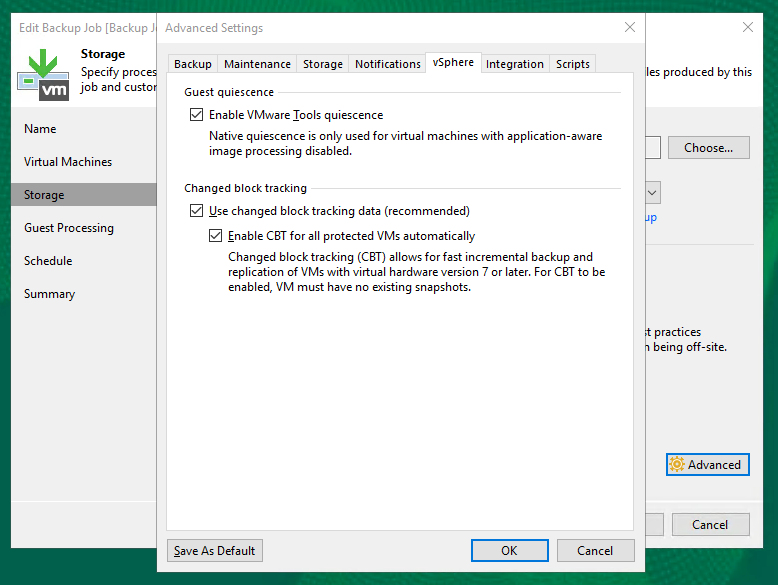Get your data ready for vSphere 5.5 End of Support
There have been lots of articles and walkthroughs on how to make that upgrade work for you, and how to get to a supported level of vSphere. This VMware article is very thorough walking through each step of the process.
But we wanted to touch on making sure your data is protected prior, during and after the upgrade events.
If we look at the best practice upgrade path for vSphere, we’ll see how we make sure we’re protected at each step along the way:
Upgrade Path
The first thing that needs to be considered is what path you’ll be taking to get away from the end of general support of vSphere 5.5. You have two options:
- vSphere 6.5 which is now going to be supported till November 2021 (so another 5 years’ time)
- vSphere 6.7 which is the latest released version from VMware.
Another consideration to make here is support for surrounding and ecosystem partners, including Veeam. Today, Veeam fully supports vSphere 6.5 and 6.7, however, vSphere 6.5 U2 is NOT officially supported with Veeam Backup & Replication Update 3a due to the vSphere API regression.
The issue is isolated to over-provisioned environments with heavily loaded hosts (so more or less individual cases).
It’s also worth noting that there is no direct upgrade path from 5.5 to 6.7. If you’re currently running vSphere 5.5, you must first upgrade to either vSphere 6.0 or vSphere 6.5 before upgrading to vSphere 6.7.
Management – VMware Virtual Center
The first step of the vSphere upgrade path after you’ve decided and found the appropriate version, is to make sure you have a backup of your vCenter server. The vSphere 5.5 virtual center could be a Windows machine or it could be using the VCSA.
Both variants can be protected with Veeam, however, the VCSA runs on a Postgres-embedded database. Be sure to take an image-level backup with Veeam and then there is a database backup option within the appliance. Details of the second step can be found in this knowledge base article.
If you’re an existing Veeam customer, you’ll already be protecting the virtual center as part of one of your existing backup jobs.
You must also enable VMware tools quiescence to create transactionally-consistent backups and replicas for VMs that do not support Microsoft VSS (for example, Linux VMs). In this case, Veeam Backup & Replication will use the VMware Tools to freeze the file system and application data on the VM before backup or replication. VMware Tools quiescence is enabled at the job level for all VMs added to the job. By default, this option is disabled.
You must also ensure Application-Aware Image Processing (AAIP) is either disabled or excluded for the VCSA VM.
Virtual Machine Workloads
If you are already a Veeam customer, then you’ll already have your backup jobs created and working with success before the upgrade process begins. However, as part of the upgrade process, you’ll want to make sure that all backup job processes that initiate through the virtual center are paused during the upgrade process.
If the upgrade path consists of new hardware but with no vMotion licensing, then the following section will help.
Quick Migration
Veeam Quick Migration enables you to promptly migrate one or more VMs between ESXi hosts and datastores. Quick Migration allows for the migration of VMs in any state with minimum disruption.
More information on Quick Migration can be found in our user guide.
During the upgrade process
As already mentioned in the virtual machine workloads section, it is recommended to stop all vCenter-based actions prior to update. This includes Veeam, but also any other application or service that communicates with your vCenter environment. It is also worth noting that whilst the vCenter is unavailable, vSphere Distributed Resource Scheduler (DRS) and vSphere HA will not work.
Veeam vSphere Web Client
If you’re moving to vSphere 6.7 and you have the Veeam vSphere Web Client installed as a vSphere plug-in, you’ll need to install the new vSphere Veeam web client plug-in from a post-upgraded Veeam Enterprise Manager.
More detail can be found in Anthony Spiteri’s blog post on new HTML5 plug-in functionality.
You’ll also need to ensure that any VMware-based products or other integrated products vCenter supports are the latest versions as you upgrade to a newer version of vSphere.
Final Considerations
From a Veeam Availability perspective, the above steps are the areas that we can help and make sure that you are constantly protected against failure during the process. Each environment is going to be different and other considerations will need to be made.
Another useful link that should be used as part of your planning: Update sequence for vSphere 5.5 and its compatible VMware products (2057795)
One last thing is a shout out to one of my colleagues who has done an in-depth look at the vSphere upgrade process.
This article was provided by our service partner : Veeam.com





